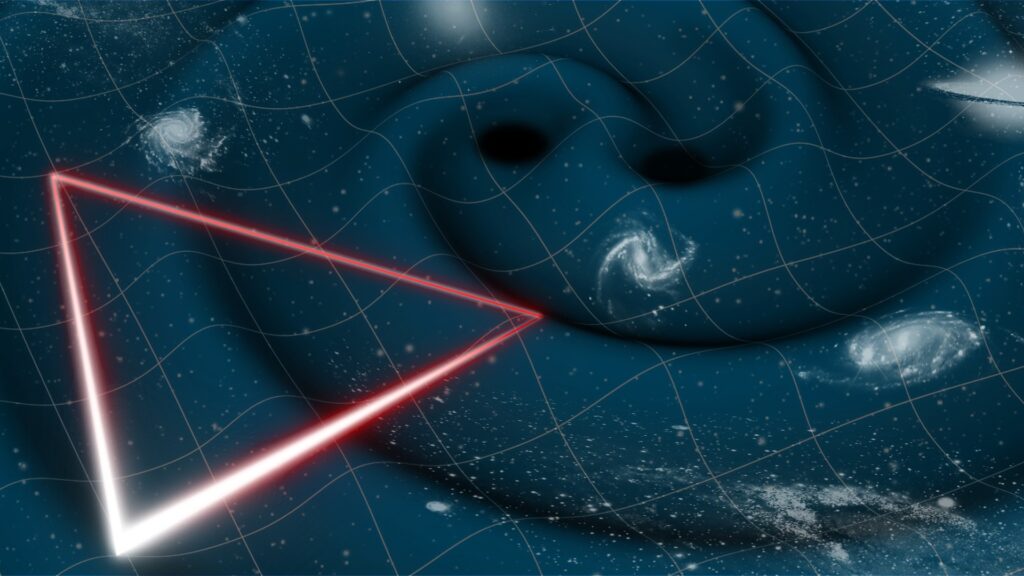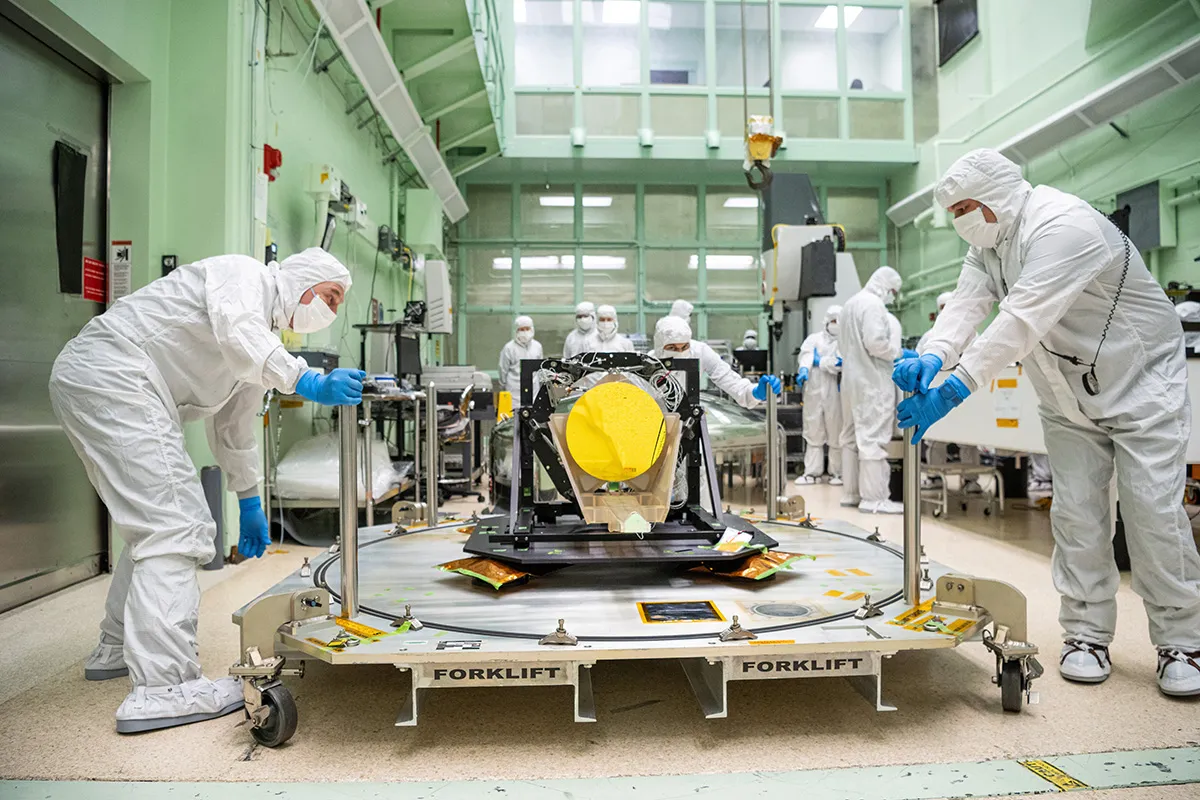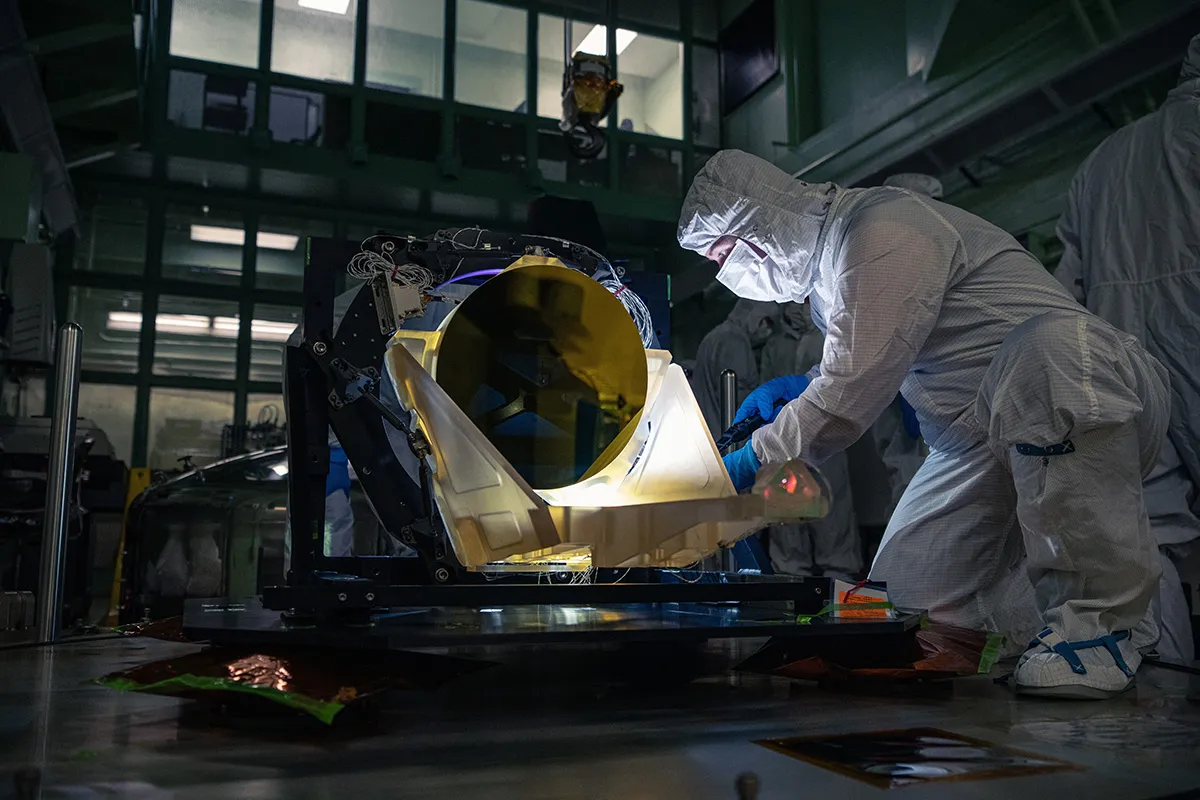NASA has shown for the first time a full-scale prototype of a telescope that will be used to search for gravitational waves in space. It will be installed on the satellites of the LISA mission.
How to find gravitational waves
Everybody that has mass and moves with variable acceleration creates gravitational waves — perturbations that generate a kind of ripples in the fabric of space-time. Their existence was experimentally confirmed in 2015. Since then, scientists have been able to detect several dozen gravitational bursts caused by extreme events such as black hole and/or neutron star mergers using ground-based observatories.

The problem is that some types of gravitational waves are harder to observe than others because mergers of different masses produce waves of different frequencies. Therefore, astronomers want to put gravity detectors into space, which would greatly improve the accuracy of the search.
This is the task assigned to the LISA mission, which is being developed by ESA with support from NASA. It will launch three spacecraft that will orbit the Sun in the shape of an equilateral triangle with a side length of 2.4 million kilometers. In this way, they will create an analog of a giant interferometer. When a passing gravitational wave causes a distortion of space-time, it will result in a small change in the distance between the satellites. By analyzing the degree of deviation, LISA will also be able to determine the origin of the gravitational wave and what part of the Universe it came from.
Prototype of a gravitational telescope
The success of the whole idea depends on the accuracy of position measurement between the vehicles, which should reach picometers (trillionths of a meter). For this purpose, each satellite will be equipped with a pair of telescopes provided by NASA. They will transmit and receive infrared laser beams.

For the first time, NASA recently unveiled to the public a prototype telescope that was built under contract by L3Harris. In May, it was delivered for tests to the Goddard Space Center. The telescope’s main mirror is coated in gold. This is necessary to better reflect infrared lasers and reduce heat loss from the surface in outer space, as the telescope will work best at near room temperature.

The prototype itself is made entirely of an amber-colored glass ceramic called Zerodur, manufactured by the German company Schott. This material is widely used to create telescope mirrors and other components requiring high precision because its shape is almost unchanged over a wide range of temperatures.
LISA is currently scheduled to be launched in 2035. The preliminary cost of the project is estimated at 1.5 billion euros.
You can also read about how dark matter affects gravitational waves.
Provided by NASA


